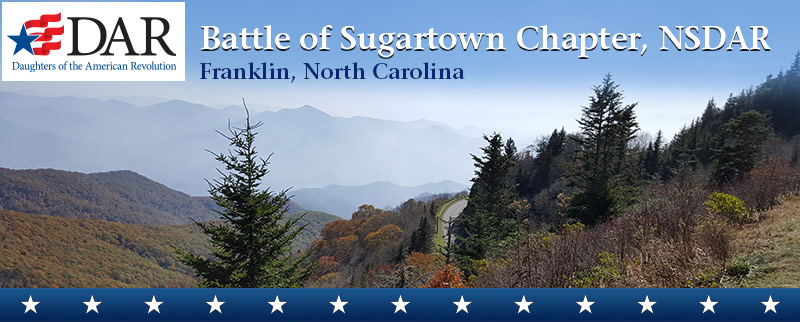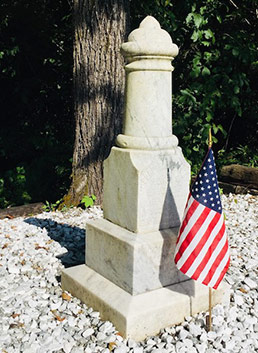
Welcome!
Welcome to the Battle of Sugartown Chapter, National Society Daughters of the American Revolution (NSDAR or DAR), website. We hope the information found here will prove helpful. Please contact us (see button in the left menu) to learn more about our active and civic-minded organization.
Our chapter holds luncheon meetings on the second Monday of the month, March through December. Our focus is to promote the DAR objectives of historic preservation, education, and patriotism through interesting chapter programs and activities. We pride ourselves in carrying out the goals and projects of the DAR, but also on being a chapter that enjoys outstanding fellowship.
We enjoy our volunteer activities and are proud to make a difference in the lives of our community, state, and country. In addition to our regular monthly meetings, our chapter sponsors educational awards and scholarships, supports Crossnore School and Children’s Home, and volunteers with our veterans. We honor our revolutionary ancestors, recognize outstanding citizens in our area, and sponsor history essays.

Photo from chapter archives
Monument to Corporal White
History — The Battle of Sugartown
Once the Continental Congress proclaimed independence in 1776, and fighting ensued between the united colonies and the crown, the British began encouraging the Native American Nations, including the Cherokee, to fight the colonies while supplying them with ammunition to do so. Late in the summer of 1782, a group of regular soldiers from General Andrew Pickens’ Brigade of South Carolina diligently pursued marauding bands of Cherokee who had been raiding frontier settlements in western North Carolina.
Led by Major Daniel Bryson, these soldiers pursued one of these bands into the area where Western Carolina University is now located, over the Cullowhee Gap and down into Elijay. The Cherokee fled through the area where the Sugarfork and Cullasaja streams merge finally moving to an area which had been the site of an old, previously destroyed Cherokee village called Sugartown. That area became the battlefield on September 10, 1782, where the Native Americans made their last stand.
Fierce fighting ensued. Though a significant number of Native American warriors were said to have been killed, only one colonial soldier died during that battle, Corporal White.
Source: Highlands Newspaper, Vol 11, #27, July 3, 2014
Masthead photo of Water Rock Knob off of the Blue Ridge Parkway, is from the chapter archives.
The content contained herein does not necessarily represent the position of the NSDAR. Web hyperlinks to non-DAR sites are not the responsibility of the NSDAR, the state organizations, or individual DAR chapters.
